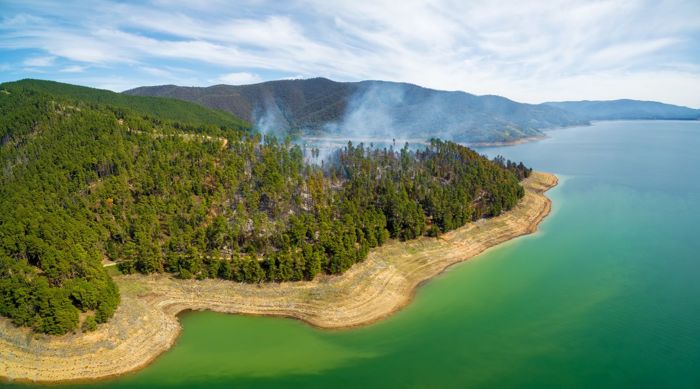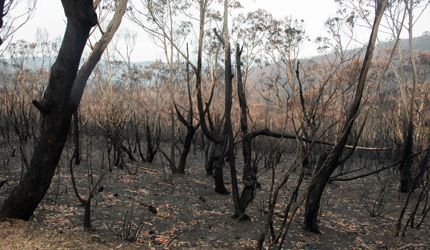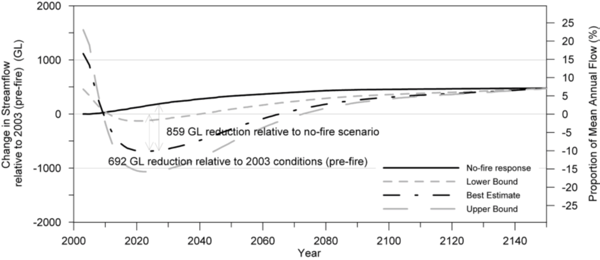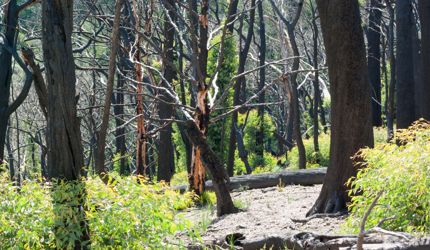Representing bushfire impacts in Source
eWater’s Source modelling provides a valuable tool to help water and catchment managers predict the impacts of the recent bushfires on river systems and water supplies.
Source has a number of rainfall-runoff models which can be directly parameterized to reflect changes to runoff volumes due to forest destruction and regrowth. Source water system models using these can then be combined with historical climate data to assess changes in the reliability of water supply resulting from the bushfire impacts during the regrowth period. Such analyses would involve hundreds of runs of the models to reflect climate variability. Additional impacts due to climate change can also be assessed. Existing water system models developed using pre-determined inflow data can be adjusted to reflect changes in runoff behaviour described by Hill et al. (2008). These models can also be used to assess changes in the reliability of water supply resulting from the bushfire impacts during the regrowth period.
The Source rainfall-runoff models can also be used to assess the likely impacts on stream and water storage water quality. The models would be paramaterised according to findings of past studies (such as Sheridan, G.J. et al. 2007), and would inform catchment and water managers where contingency management plans are required. A precursor to Source has been used to model both the runoff volume and quality impacts of past bushfires in Australia (Murray-Darling Basin Commission, 2007; Feikema et al. 2011).
Water Research Australia – 2020 Catchment Forum
This year’s Water Research Australia catchment forum had a focus on bushfires ‘Recovery for Resilience’. eWater presented the initial findings of our analysis of the impacts of the 2003 bushfires in the ACT on water yield.

References



